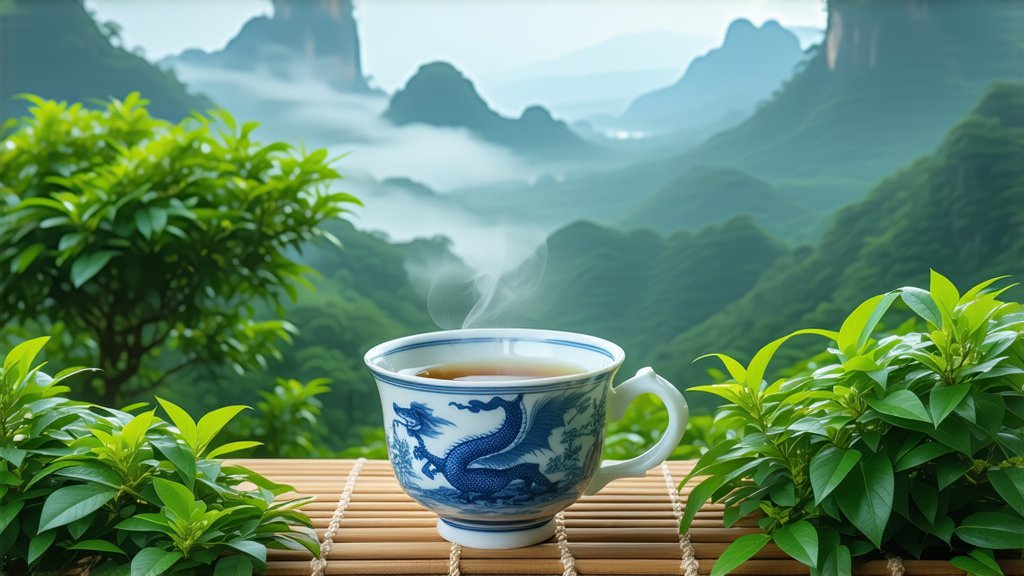
The Delicate Art of Dragon Well (Longjing) Green Tea
In the vast expanse of China's rich tea culture, few teas capture the imagination and palate quite like Dragon Well (Longjing) green tea. Known for its flat shape and chestnut-green color, Dragon Well tea is not only a beverage but an experience steeped in history, tradition, and meticulous craftsmanship. This article delves into the origins, varieties, processing techniques, and the art of appreciating this exquisite tea, offering international readers a glimpse into the world of one of China's most revered green teas.
Historical Background
Dragon Well tea traces its roots back to the Tang Dynasty (618-907 AD), with its name first appearing during the Qing Dynasty (1644-1912). Legend has it that the tea was named after a well located near the production area in Hangzhou's West Lake District. According to folklore, two dragons descended from heaven to play in this well, bringing blessings and prosperity to the land. Today, Dragon Well tea continues to be celebrated as a symbol of purity, elegance, and the harmonious blend of nature and human ingenuity.
Varieties of Dragon Well Tea
While Dragon Well tea primarily refers to a specific type of green tea produced in the West Lake region of Hangzhou, Zhejiang Province, there are subtle variations within this category. The most renowned is Luochuan (or Meijiawu), which comes from the original village where the tea was first cultivated. Other notable subtypes include Xihu (from West Lake) and Qiandaohu (from Qiandao Lake), each with its unique terroir imparting distinct flavors and aromas.
Processing Techniques
The journey from fresh leaf to finished product involves several intricate steps that define Dragon Well tea's distinctive character:
-
Handpicking: Only the youngest shoots and leaves are handpicked, typically during the early spring harvest when the tea is at its most tender and flavorful.
-
Fixing: Freshly picked leaves undergo a high-temperature fixation process to halt oxidation. This step is crucial for preserving the tea's vibrant green color and fresh aroma.
-
Shaping: One of the hallmark features of Dragon Well tea is its flat, sword-like appearance, achieved through skilled hand manipulation or machine pressing. This shaping process also helps release the tea's natural oils, enhancing its fragrance.
-
Drying: Finally, the shaped leaves are carefully dried to remove excess moisture while preserving their delicate structure and taste.
Appreciating Dragon Well Tea
Tasting Dragon Well tea is an art form that engages all five senses. Here’s how you can fully appreciate this exceptional tea:
-
Visual Inspection: Observe the dry leaves for their uniform flatness and vibrant green hue. When brewed, watch as they unfurl gracefully, revealing their full beauty.
-
Aroma: Inhale deeply before sipping to catch the subtle scents of roasted chestnuts, fresh grass, and sometimes a hint of floral notes.
-
Taste: Take a slow sip, allowing the tea to spread across your palate. Notice the initial sweetness followed by a lingering umami finish, characteristic of high-quality Dragon Well tea.
-
Texture: Feel the silky smoothness of the liquid as it coats your tongue, a testament to the tea's fine processing.
-
Aftertaste: Pay attention to the long-lasting aftertaste, which should be clean, refreshing, and slightly sweet without bitterness.
Conclusion
Dragon Well tea stands as a testament to China's profound tea heritage, embodying centuries of tradition and expertise. Its delicate flavor profile, intricate production methods, and storied past make it a cherished treasure among tea enthusiasts worldwide. As you embark on your own journey exploring Dragon Well tea, remember that each cup represents not just a drink but a connection to a timeless cultural legacy.
By delving into the depths of Dragon Well tea, we hope this article has piqued your curiosity and inspired you to savor this remarkable green tea for yourself. Whether you're a seasoned connoisseur or a curious newcomer, Dragon Well tea invites you to experience the essence of Chinese tea culture in every sip.